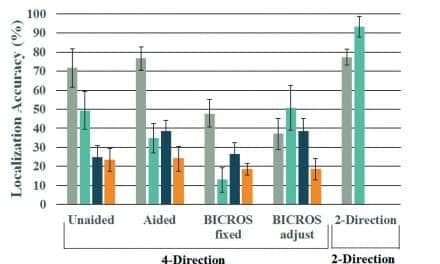Washington, DC — Exposure to hazardous noise can have negative implications for both service member health and readiness, says the US Government Accountability Office (GAO), and it is recommending that the Department of Defense (DOD) improve its hearing conservation program for service members.
The full report is called “Hearing Loss Prevention: Improvements to DOD Hearing Conservation Programs Could Lead to Better Outcomes” and is available online.
Improving the hearing conservation programs is not only important for service members, but also the Veteran Administration’s (VA’s) budget. According to the GAO’s report, in fiscal year 2009, some of the most common impairments for veterans receiving disability benefits were hearing related. In fact, annual payments for such conditions exceeded $1.1 billion.
To examine DOD efforts to prevent hearing loss, GAO is reporting on how well the DOD and armed services identify and mitigate hazardous noise, and how well the military evaluates its hearing conservation program performance. The report also evaluates the status of DOD’s Hearing Center of Excellence and the extent that DOD and VA are sharing information to inform this and other efforts.
The GAO found that while each of the armed services is taking steps to monitor hazardous noise, there are inconsistencies in some hearing protection strategies and limited training that result in the weakening of mitigation efforts.
Services do monitor noise periodically, depending on the level of risk service members have in being exposed to hazardous noise; for example, annually for firing ranges and flight decks, and every 5 years for administrative offices. However, they lack a reliable system for detecting changes in noise levels that may occur outside the scheduled review cycle.
Although DOD requires that noise be controlled by setting exposure limits and requiring the use of hearing protection, these strategies are not consistently used. For example, service members told the GAO that they do not always wear hearing protection, citing concerns with comfort and communication. Annual hearing-related training is required for at-risk service members, but services are not able to fully determine who has completed annual training, and many service members told GAO that training is not necessarily well timed.
The GAO also found that DOD’s hearing prevention program performance indicators are not sufficiently comprehensive and, thus, evaluation is limited by weaknesses in the processes used to capture, track, and use performance data. Finally, audiologists and other key stakeholders do not routinely coordinate to share and evaluate hearing loss data to identify and mitigate noise hazards. Individual services have, at times, conducted reviews of their own programs and made some improvements.
While the DOD has developed, though not yet finalized, a plan for a Hearing Center of Excellence to improve hearing loss prevention, neither Congress nor the DOD has set a date for when planning should be formally approved to implement the center.
In conclusion, the GAO recommends that to improve hearing conservation programs, DOD should address issues with the type, timing, and tracking of training and education; develop an appropriate set of performance indicators; improve processes to collect and use performance data; and examine services’ reviews to identify opportunities for program improvement.
SOURCE: United States Government Accountability Office (GAO)




